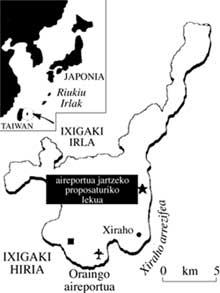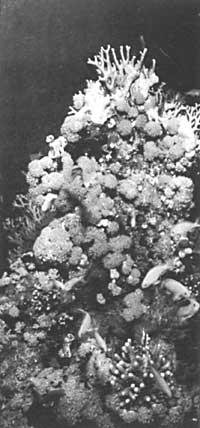Save the coral
1990/06/01 Elhuyar Zientzia Iturria: Elhuyar aldizkaria

The ten-year conflict comes this summer to the hardest point in bringing together scientists from around the world and taking steps to save a dazzling coral reef when they pressure the Japanese government. Nature protection institutions believe that this pressure can push the Japanese government to abandon its plans to build an airport near the Xiraho reef. The Xiraho Reef is located on Ixigaki Island in southern Japan.
This problem will serve to demonstrate Japan's attitude towards ecology. Those interested in saving the reef have taken as a basis a study by the International Union for the Rescue of Nature (IUCN).
According to the IUCN report, it is the oldest and largest blue coral reef (coérule Heliopora) of the iparremisfera and its scientific value is incalculable. Scientists have found 130 different species of coral.
The clays and lands that are thrown into the water in the construction works are killed by corals and so it has happened in the surroundings of Xirahoko. The risk of the Xiraho reef is the new airport runway to be carried out. In addition, they want to make the track because they want to bring more tourists to visit the reef.

The local government and two-thirds of the population have pushed for the new airport since the 1970s. According to them, the current airport is overflowing and dangerous. The new airport could accept the big planes coming from Tokyo.
Local fishermen have faced since their inception to the new airport, as they get their lives from fishing fish that live on the reef.
Influenced by environmental and fishing pressure. And now they want to make the airport 5 km north of what was thought. Local authorities believe that the new location avoids the risks of reef deterioration.
According to the environmentalists, the work needed to place the lighting of the track will be done only 300 m from the reef. The dust generated during the construction process can kill corals, as it prevents the light needed to live from reaching them. This is what the study by François Doumenge of the Institute of Oceanography of Monaco says.

Gai honi buruzko eduki gehiago
Elhuyarrek garatutako teknologia




